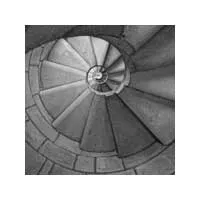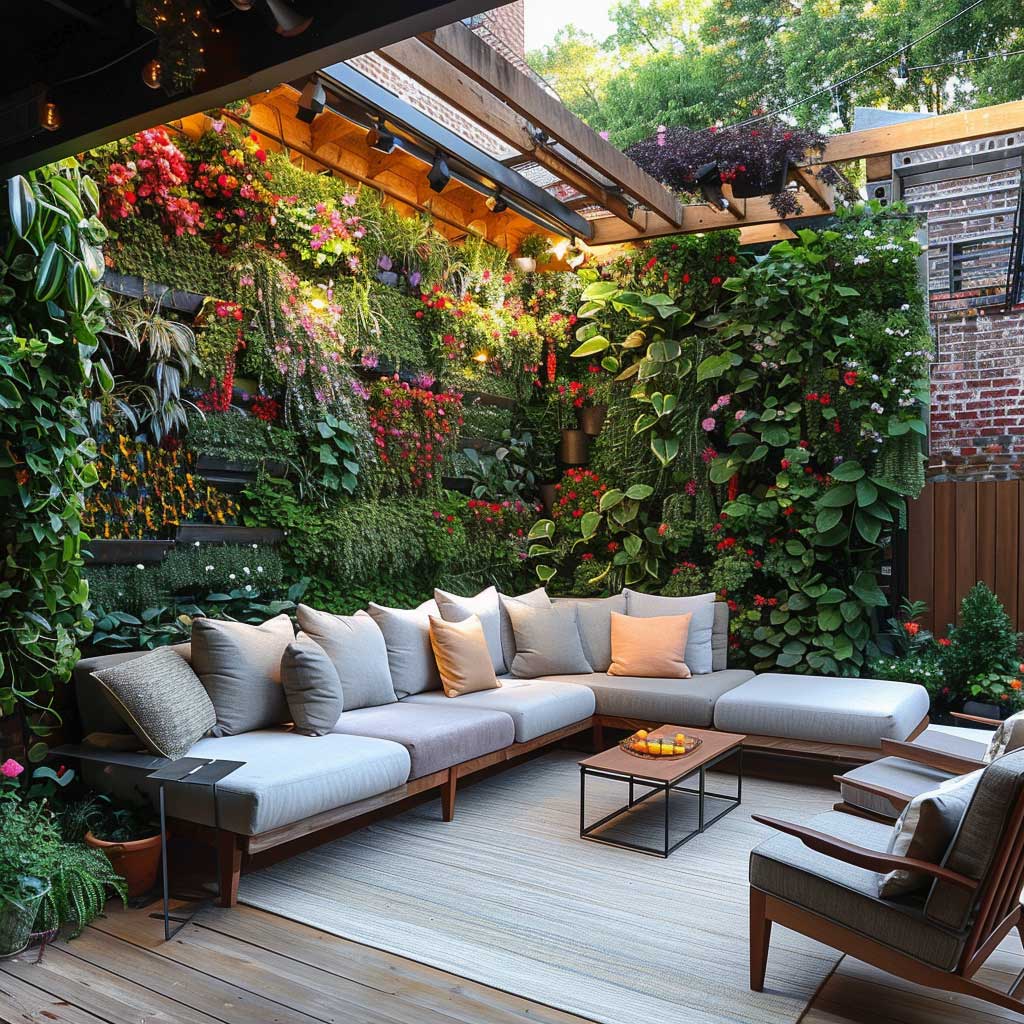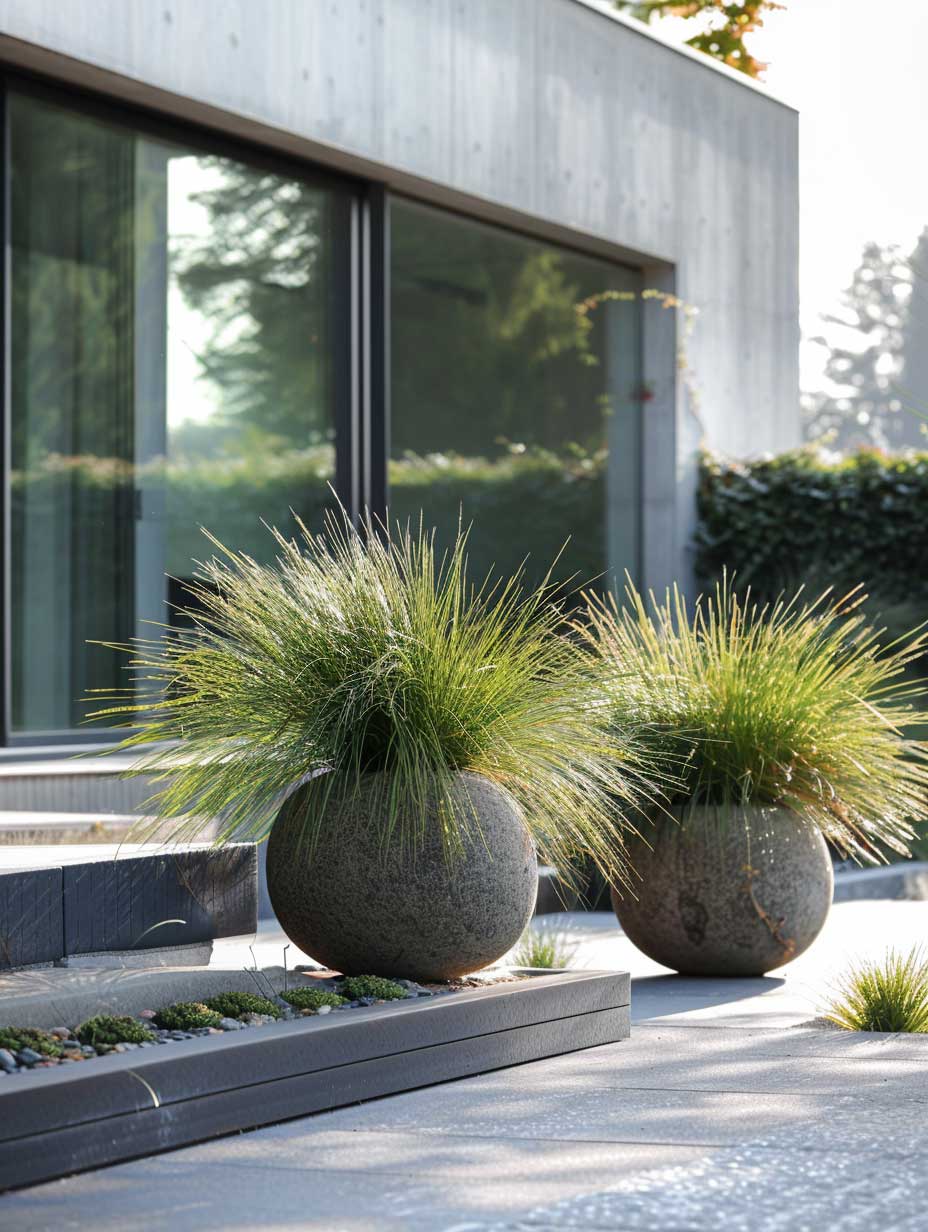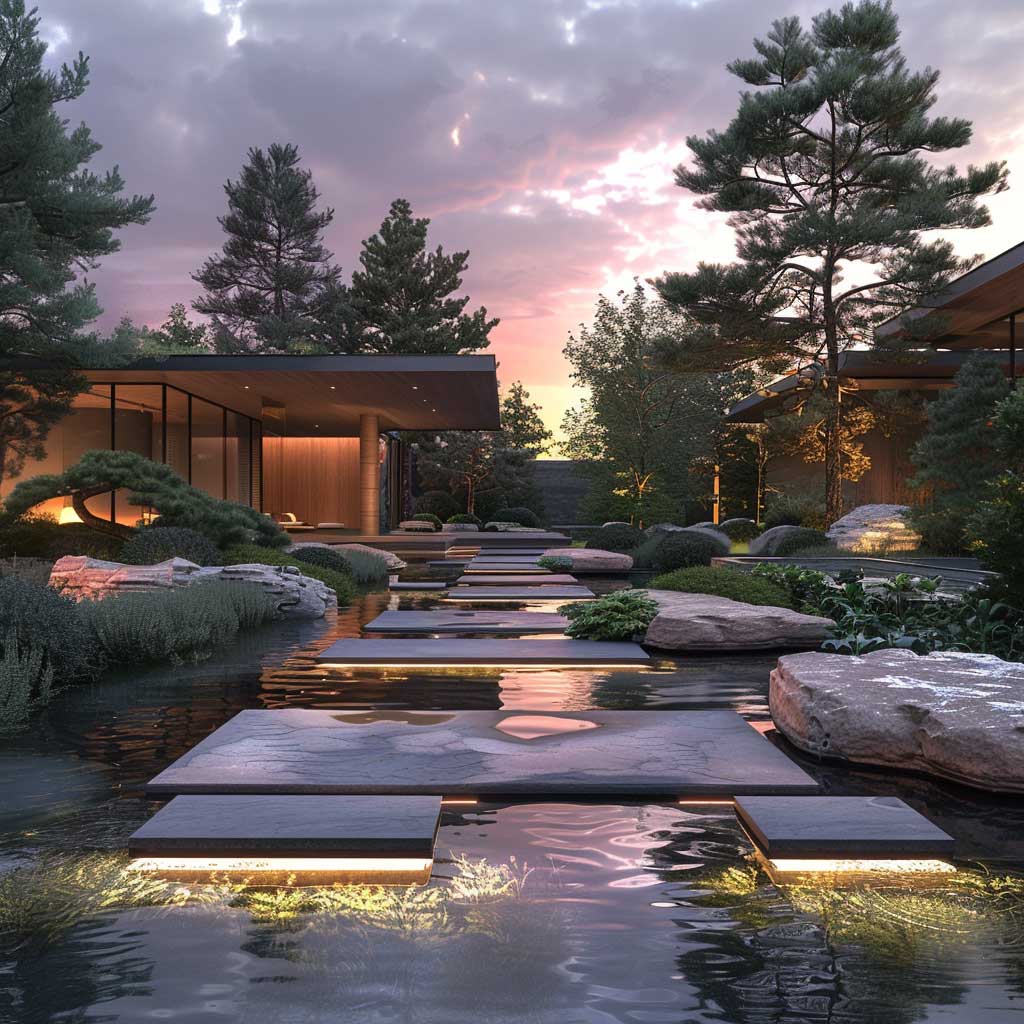Content
Embracing simple landscape design is about creating a beautiful, cohesive outdoor space that complements your lifestyle while requiring minimal upkeep. This approach to gardening not only enhances the aesthetic appeal of your home but also allows you to enjoy the beauty of nature without the constant demand for maintenance. Through strategic choices in plant selection, hardscaping, and layout, it’s possible to cultivate a garden that thrives with minimal intervention, proving that simplicity and low maintenance can indeed go hand in hand.
Effortless Green Spaces: Simple Landscape Design Principles
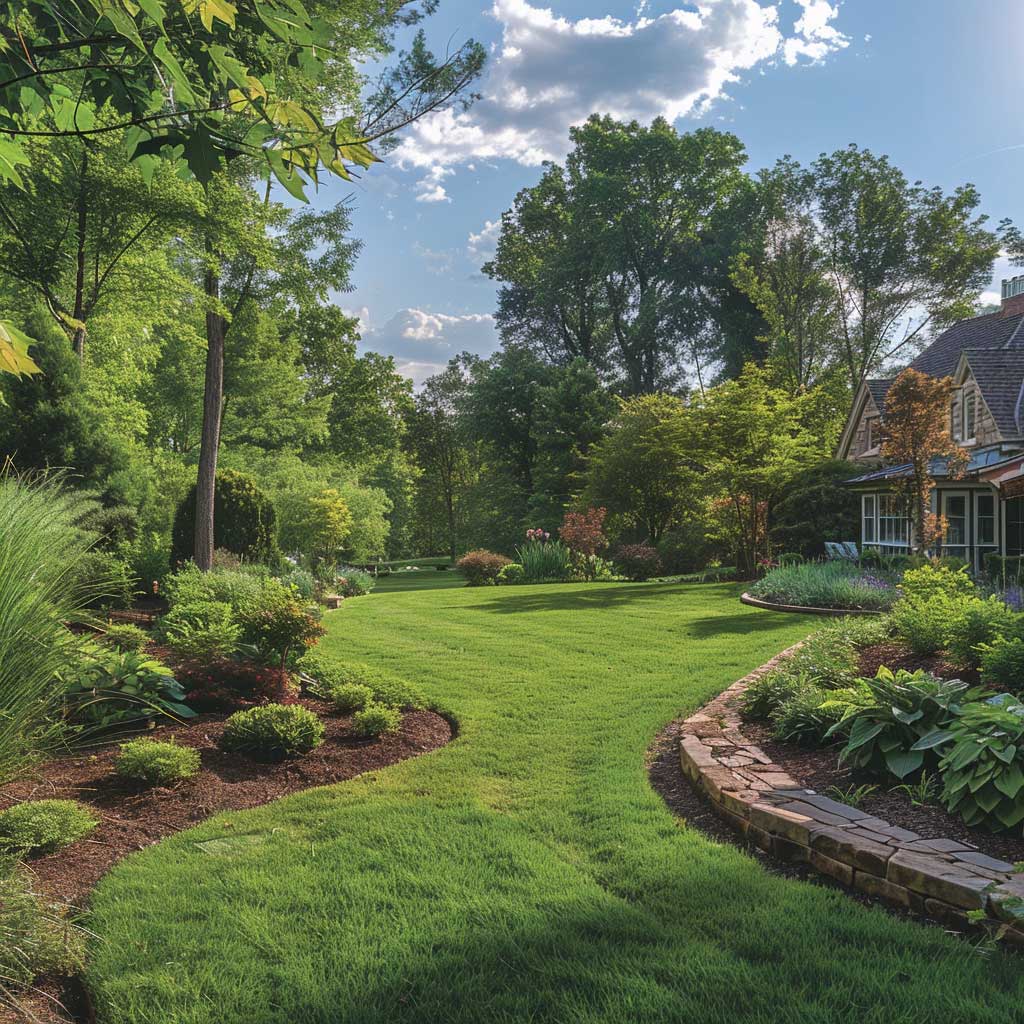

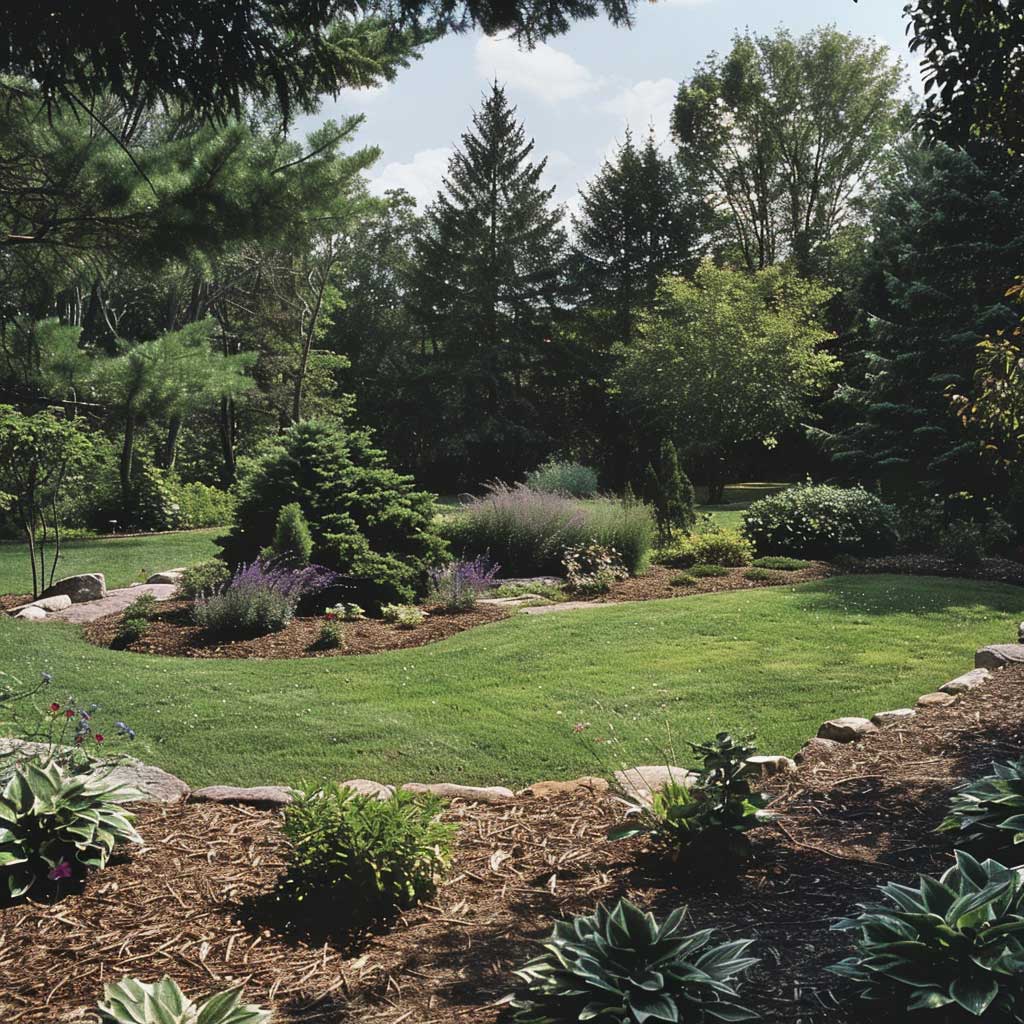

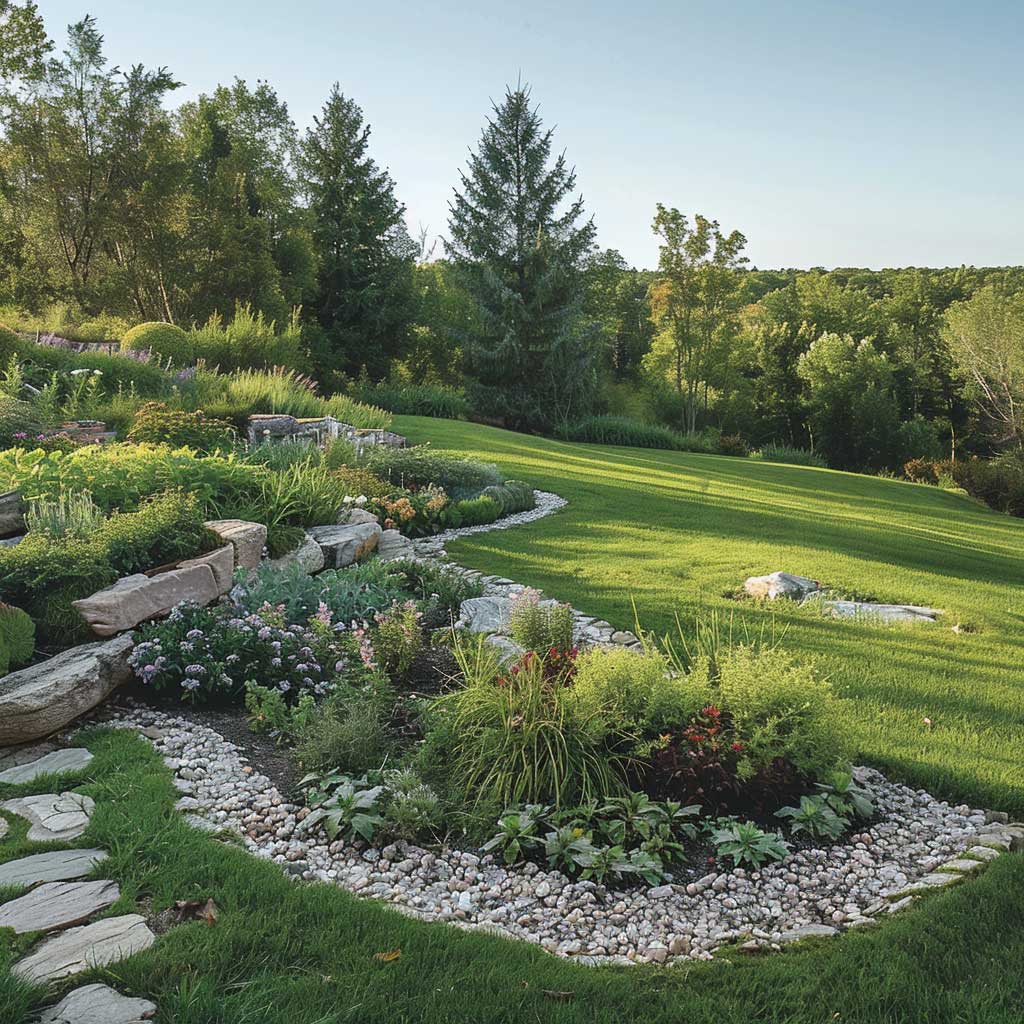

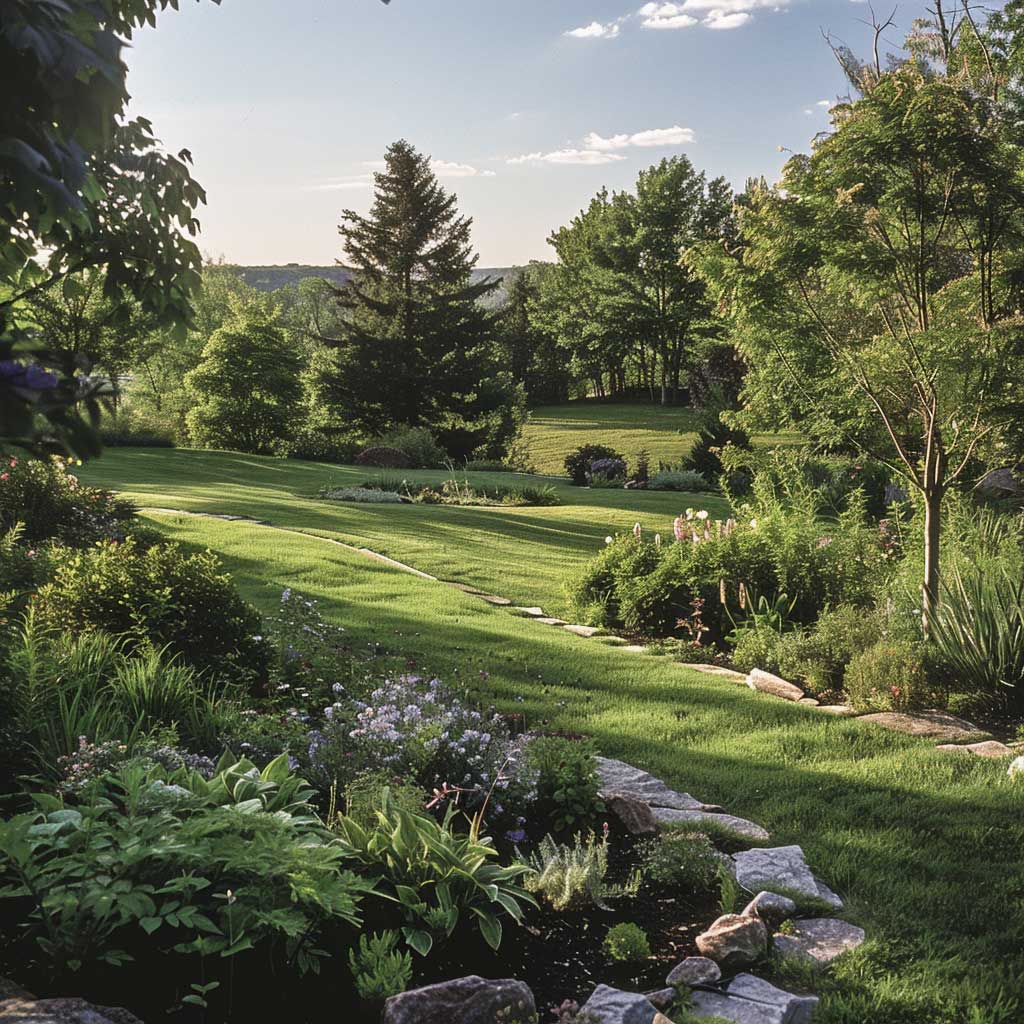

The essence of creating an effortless green space lies in embracing simple landscape design principles that prioritize beauty, ease of maintenance, and harmony with the natural surroundings. This approach to landscaping offers a way to enjoy the outdoors without the burdensome upkeep traditionally associated with lush gardens. By focusing on design elements that streamline care while enhancing aesthetic appeal, homeowners can cultivate serene and inviting outdoor areas that resonate with simplicity and elegance.
At the core of simple landscape design is the strategic selection of plantings. Opting for native plants is a cornerstone of this philosophy, as these species are naturally adapted to the local climate and soil conditions, requiring far less water, fertilizer, and pest control than their exotic counterparts. A garden composed of native perennials, grasses, and shrubs not only thrives with minimal intervention but also provides essential habitats for local wildlife, contributing to biodiversity and ecological health.
Another principle of simple landscape design involves the use of mulch in plant beds. Mulch not only suppresses weeds and retains soil moisture, reducing the need for frequent watering and weeding, but also adds a finished look to garden beds, creating a neat and cohesive appearance. Organic mulches, such as wood chips or shredded bark, decompose over time, enriching the soil and further reducing the garden’s maintenance needs.
Hardscaping plays a pivotal role in simple landscape design, offering durable and low-maintenance solutions for defining spaces and creating functional areas within the garden. Materials like stone, gravel, and pavers can be used to construct walkways, patios, and borders that require little upkeep compared to grass or garden beds. Incorporating hardscaping elements not only minimizes the area that needs regular maintenance but also adds texture and contrast to the landscape, enhancing its visual appeal.
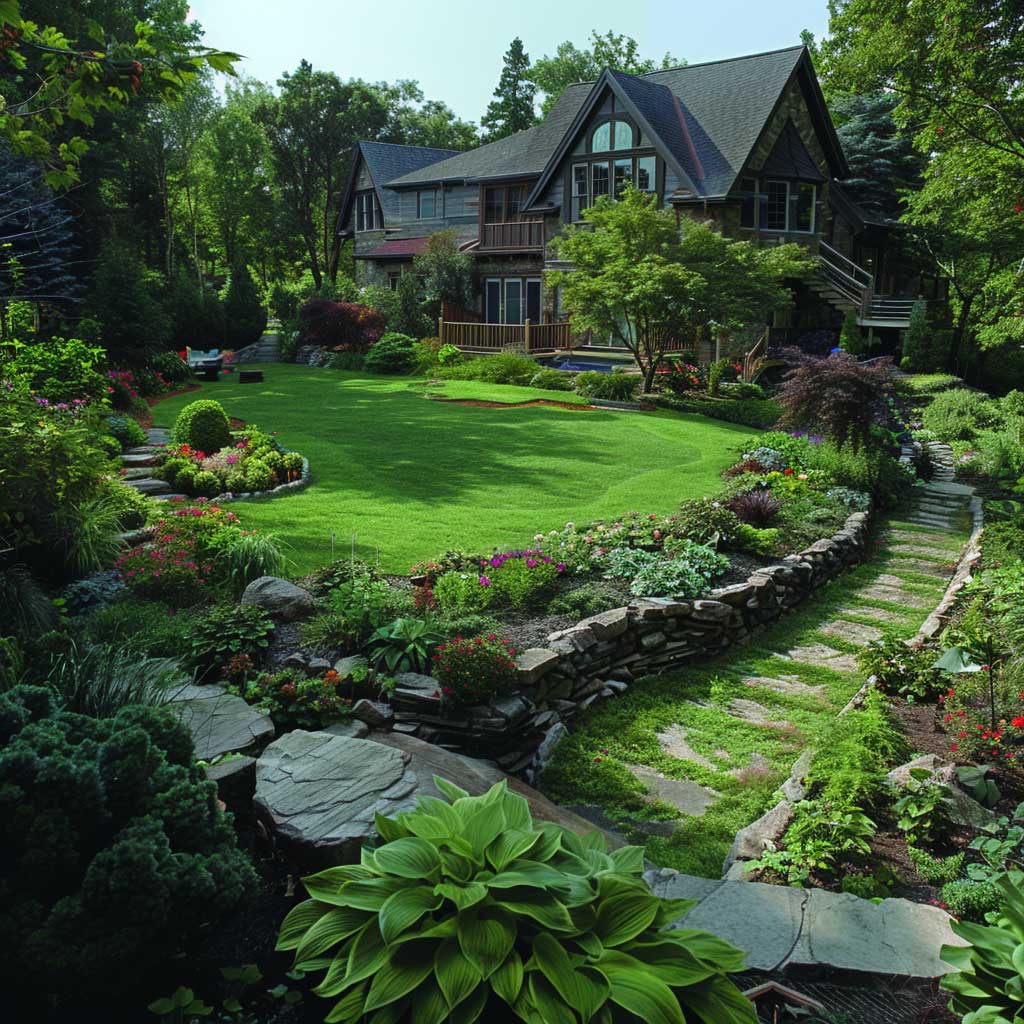



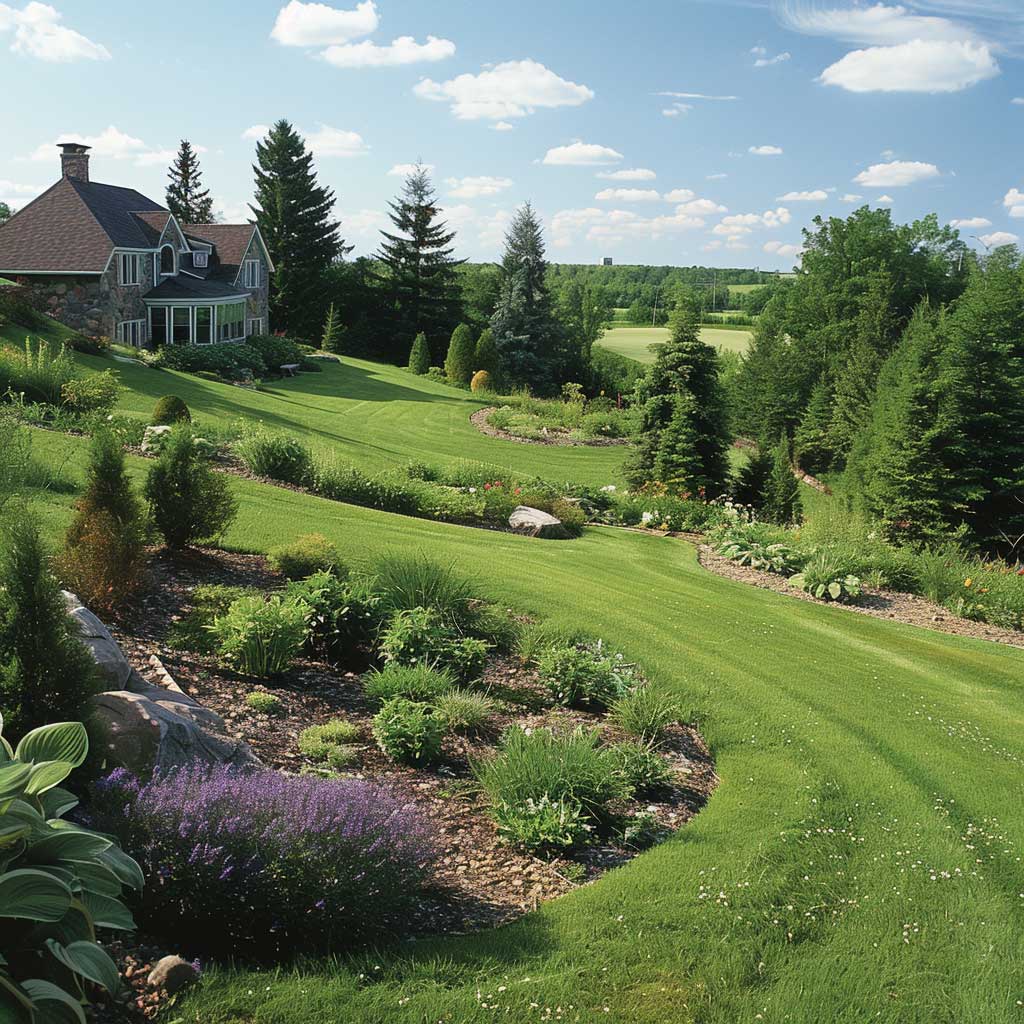



Design simplicity extends to the layout of the garden as well. A straightforward, uncluttered design that emphasizes clean lines and open spaces can make the landscape easier to navigate and maintain. Simplifying the garden’s structure can involve consolidating plantings into defined beds or borders, reducing the number of individual plants and varieties to minimize upkeep and create a more impactful visual statement.
Water features, often seen as high-maintenance additions to the garden, can be incorporated into simple landscape designs in ways that minimize their upkeep. For instance, a small, recirculating fountain or a birdbath offers the soothing presence of water without the complex maintenance of larger ponds or waterfalls. These features attract wildlife and add a focal point to the garden, enhancing its beauty and tranquility with minimal effort.
Embracing simple landscape design does not mean sacrificing beauty or interest. On the contrary, it allows homeowners to create outdoor spaces that are both stunning and sustainable. By choosing plants wisely, incorporating low-maintenance hardscaping, and adopting a minimalist approach to garden layout, it’s possible to design an effortless green space that invites relaxation and enjoyment without the constant demands of traditional gardening. This approach to landscaping not only aligns with modern lifestyles that may not allow for time-consuming garden care but also promotes a more sustainable interaction with the natural world, creating spaces that are as good for the planet as they are for the soul.
Serenity in Simplicity: Creating Peaceful Outdoor Retreats


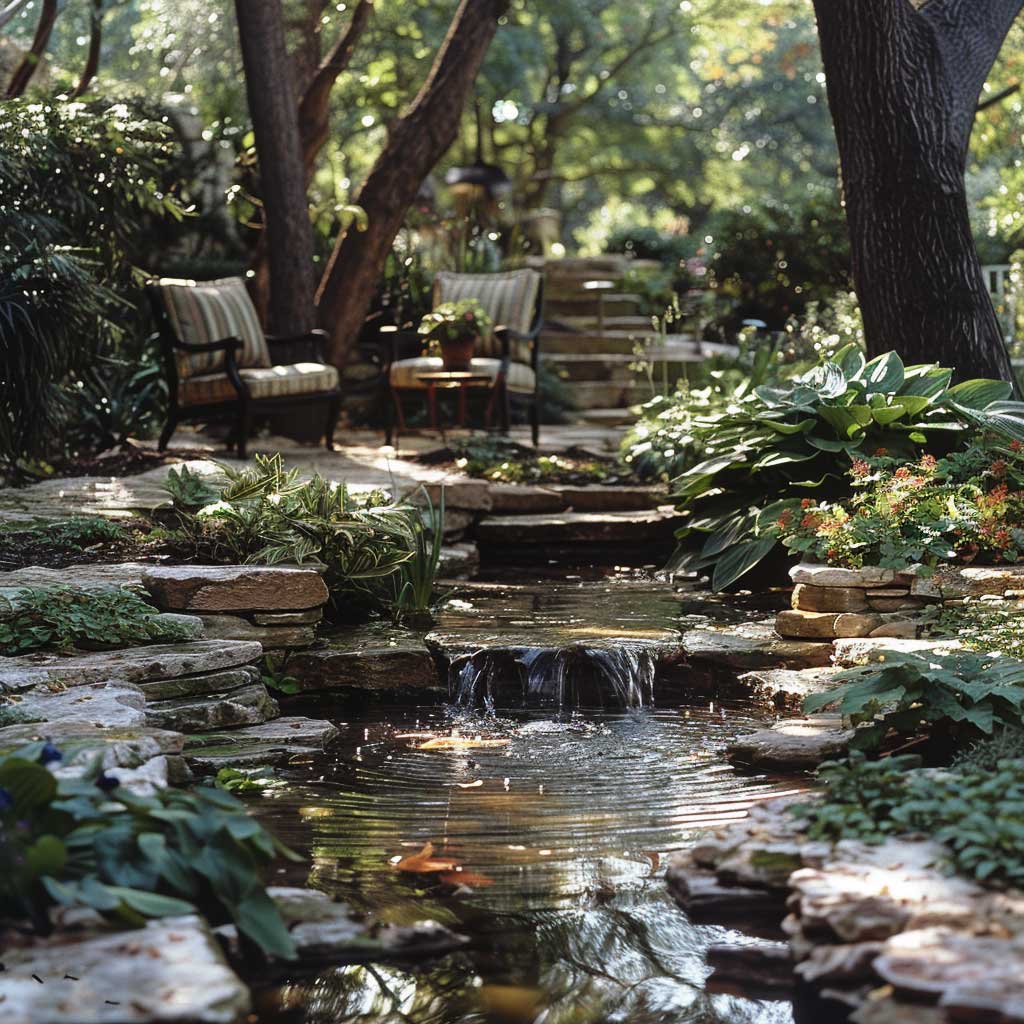

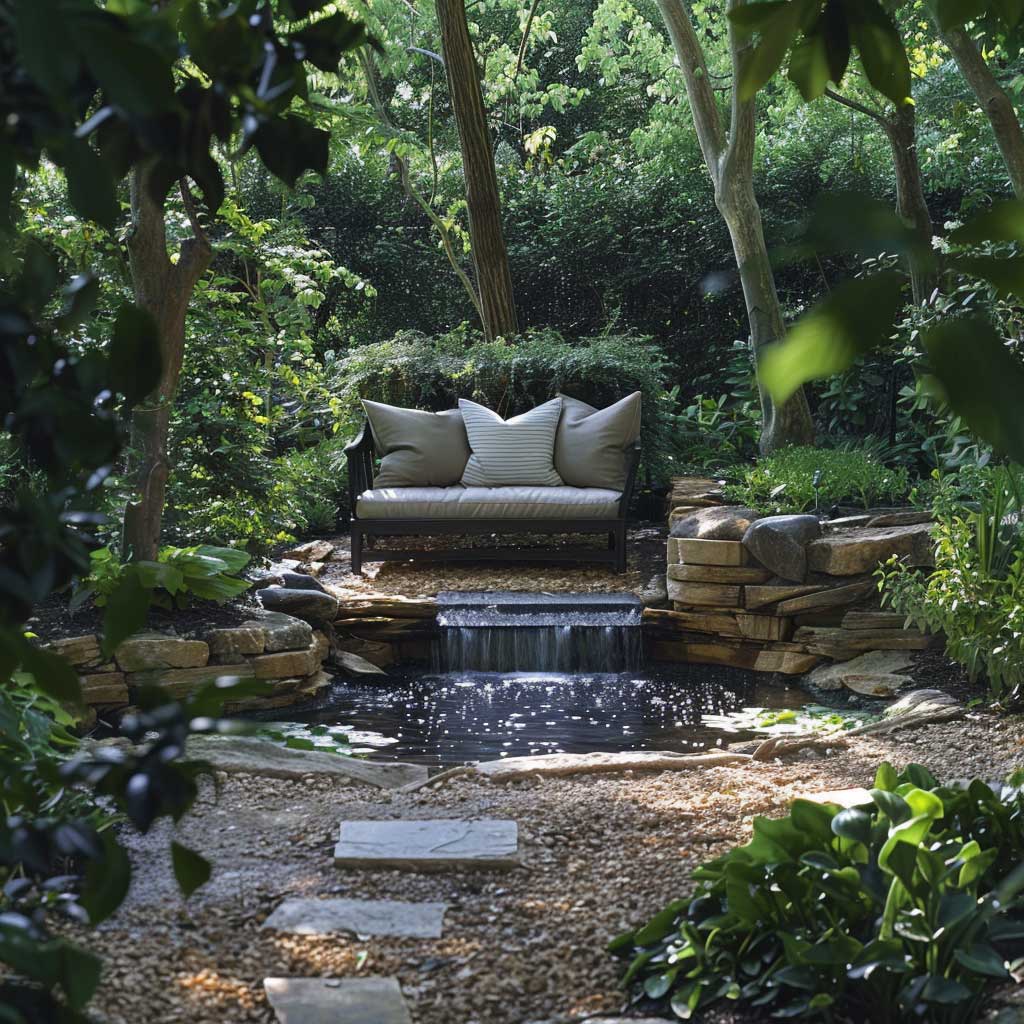

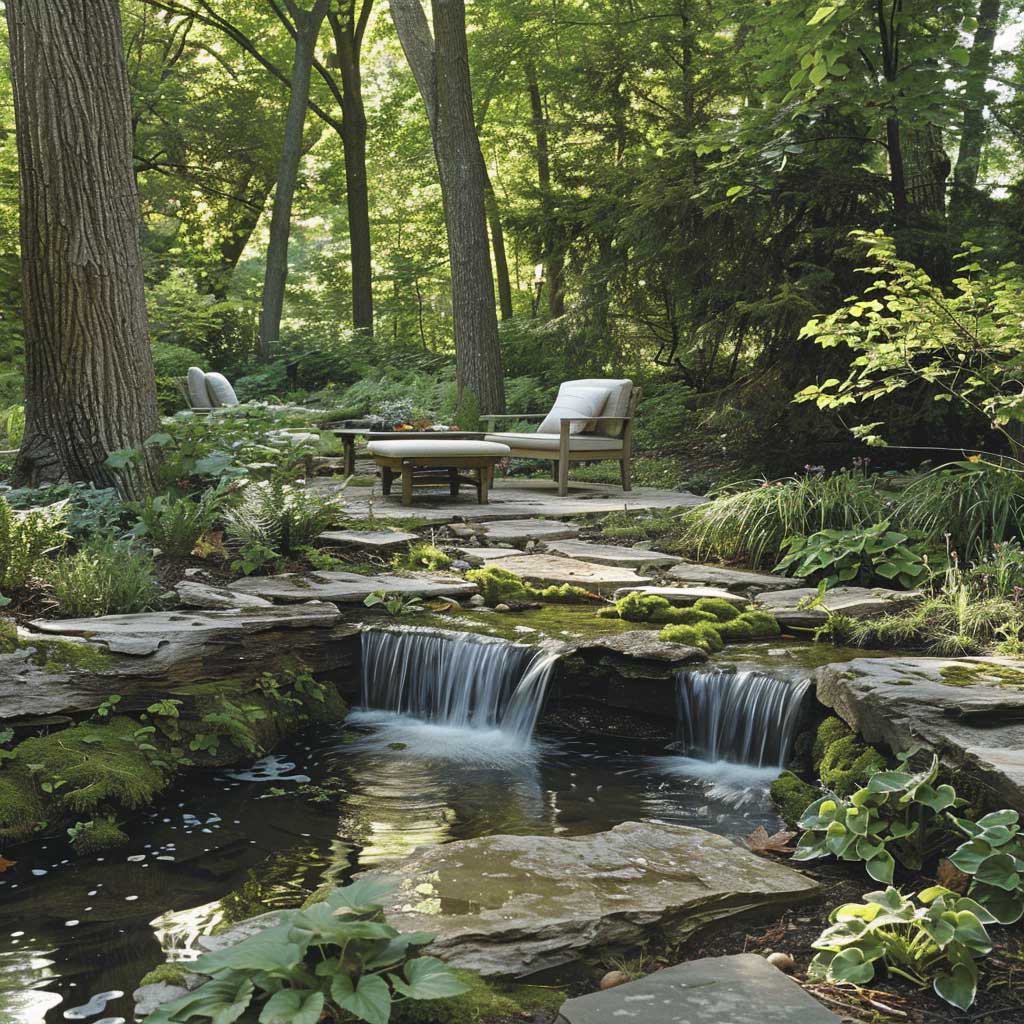

In the quest for tranquility and peace within the confines of one’s property, the principles of simple landscape design emerge as a guiding light. This approach to creating outdoor spaces is not merely about aesthetic appeal; it’s about forging a sanctuary that offers respite from the bustling world outside. By adhering to a philosophy of minimalism and thoughtful selection, one can transform an ordinary garden into a serene retreat that beckons with the promise of calm and simplicity.
Central to achieving this serenity is the deliberate use of space and elements that invoke calm. Water features play a pivotal role in this landscape design strategy. A modest, self-contained water fountain or a small pond can serve as the heart of this peaceful retreat, providing a constant, soothing sound that blankets the garden in tranquility. These water elements become focal points around which the rest of the garden is designed, drawing wildlife and infusing the air with a sense of freshness and renewal.
The plant selection for such serene spaces leans heavily towards species that require minimal attention, yet contribute significantly to the garden’s atmosphere of calm. Ornamental grasses that sway gently in the breeze, ferns that thrive in the dappled shade, and ground covers that carpet the earth with green are all quintessential to crafting a peaceful outdoor retreat. These plants are chosen not only for their low-maintenance qualities but also for their ability to blend seamlessly into a tranquil garden tableau, offering textures and shades of green that soothe the senses.
Incorporating natural materials into the landscape design reinforces the connection to the serene essence of nature. Paths laid with natural stone, benches crafted from reclaimed wood, and borders defined by river rocks are elements that enhance the garden’s peaceful ambiance. These materials are chosen for their durability and natural beauty, requiring little upkeep while grounding the space in the simplicity and solidity of the natural world.
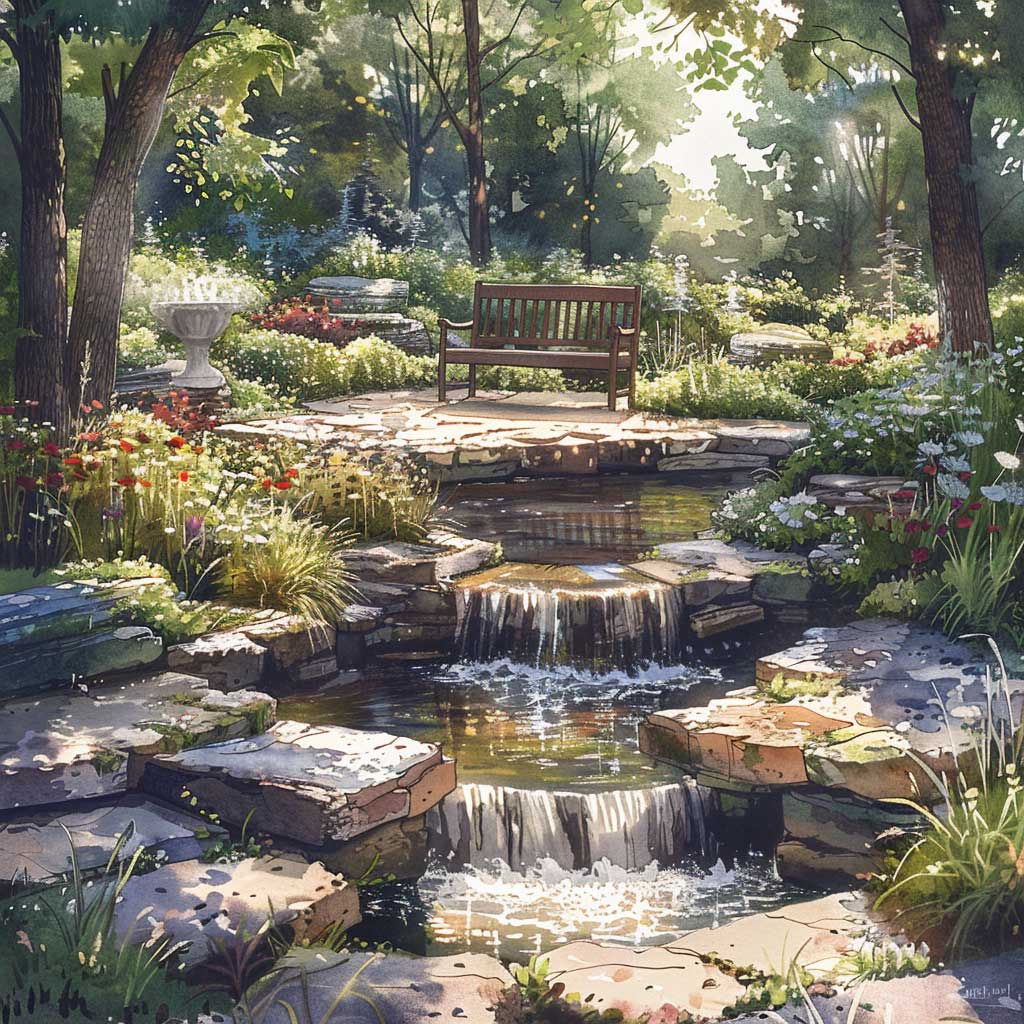

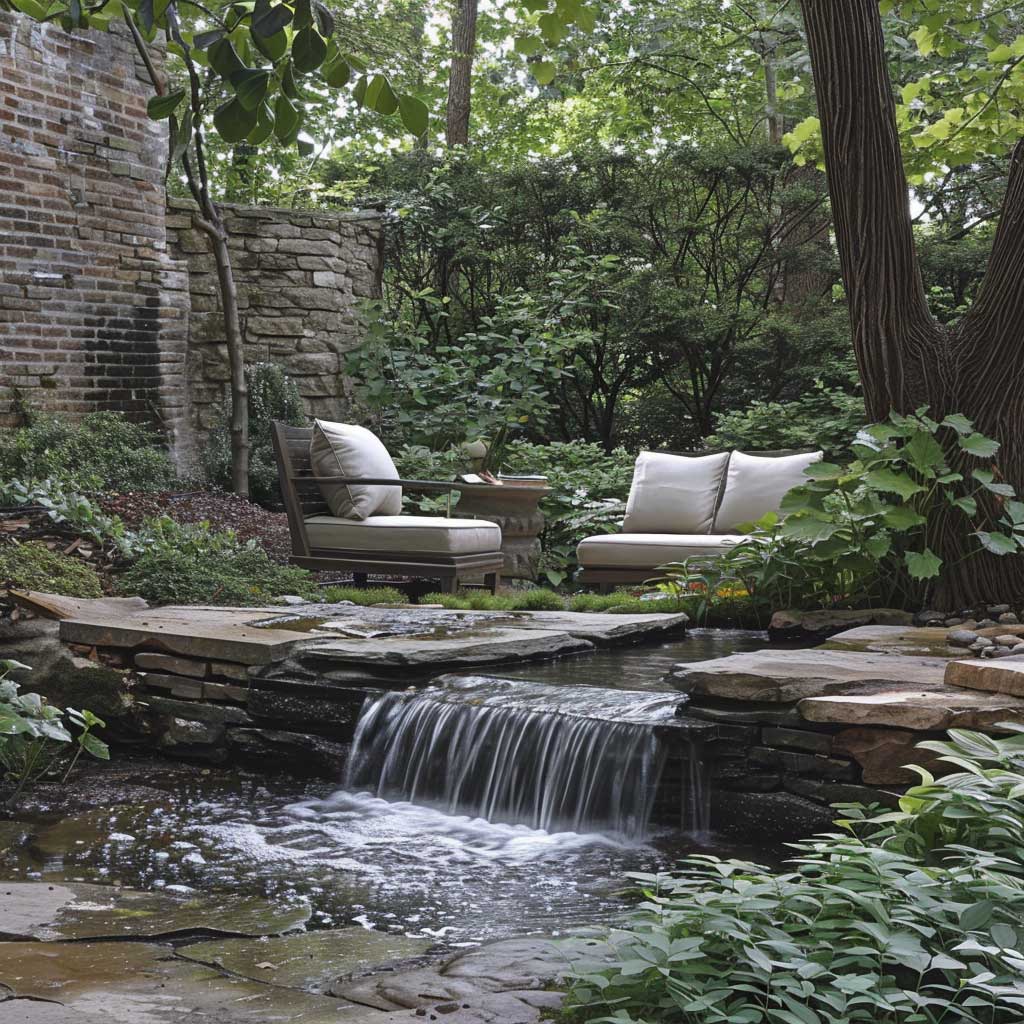

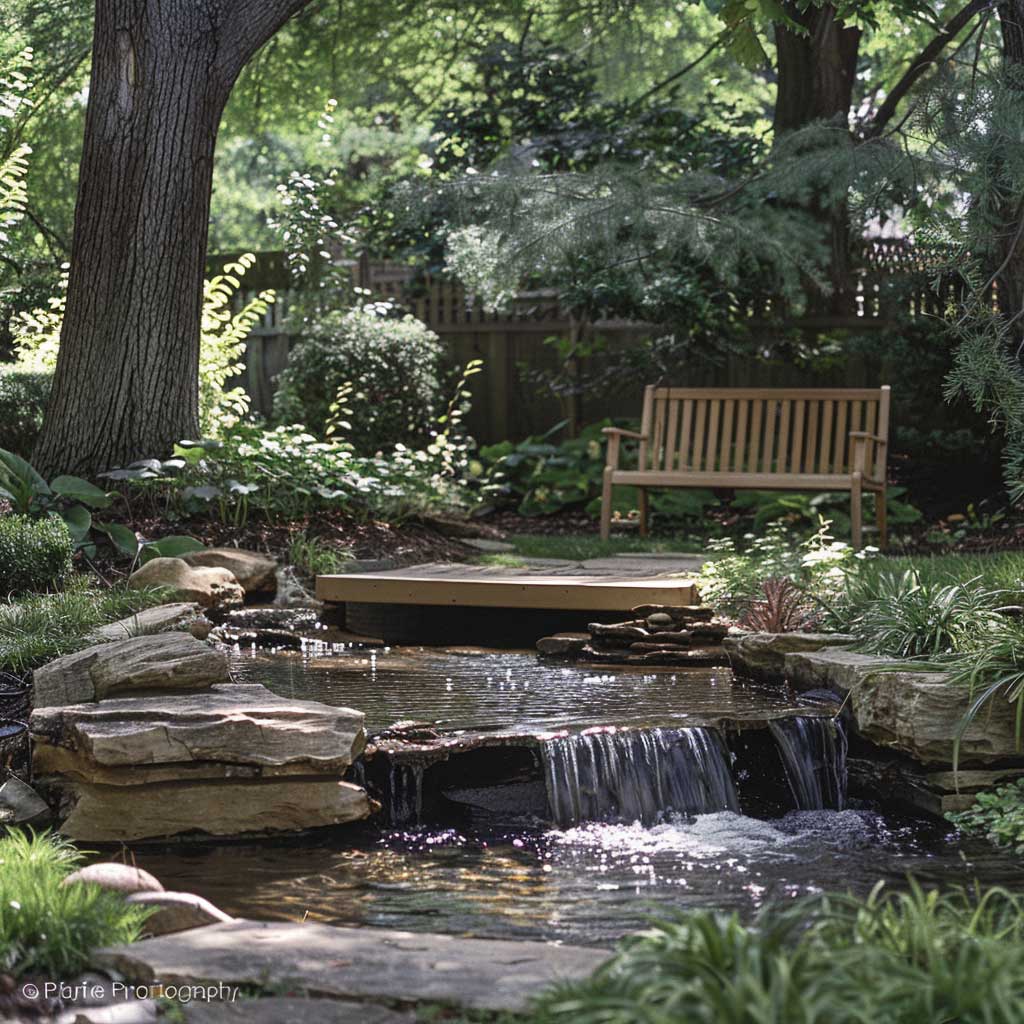



The layout of a serene garden is intentionally uncomplicated, emphasizing open spaces and clean lines that allow for unobstructed movement and sightlines. This simplicity in design not only makes the garden easier to maintain but also creates a sense of spaciousness and freedom, essential qualities in a peaceful retreat. Strategic placement of seating areas invites contemplation and relaxation, offering vantage points to enjoy the garden’s beauty in solitude or the company of loved ones.
Lighting, too, is a critical component of serene outdoor retreats, employed not to overwhelm but to gently enhance the garden’s natural beauty after dusk. Solar-powered lights that mimic the soft glow of moonlight, discreetly placed along pathways or within planting beds, extend the garden’s usability into the evening while maintaining its peaceful ambiance.
Creating a serene outdoor retreat through simple landscape design is an exercise in restraint and intentionality. It’s about choosing elements that harmonize with the natural environment and resonate with the soul’s longing for peace. This minimalist approach does not merely aim to reduce maintenance but to elevate the garden to a place of refuge, where every stone, plant, and drop of water contributes to an atmosphere of tranquility and simplicity.
By embracing the principles of simple landscape design, homeowners can craft spaces that are not just easy to care for but are also sanctuaries of serenity and peace, proving that in the realm of landscape design, less can indeed be more.
Chic Minimalism: Elegant Landscape Ideas for Modern Living
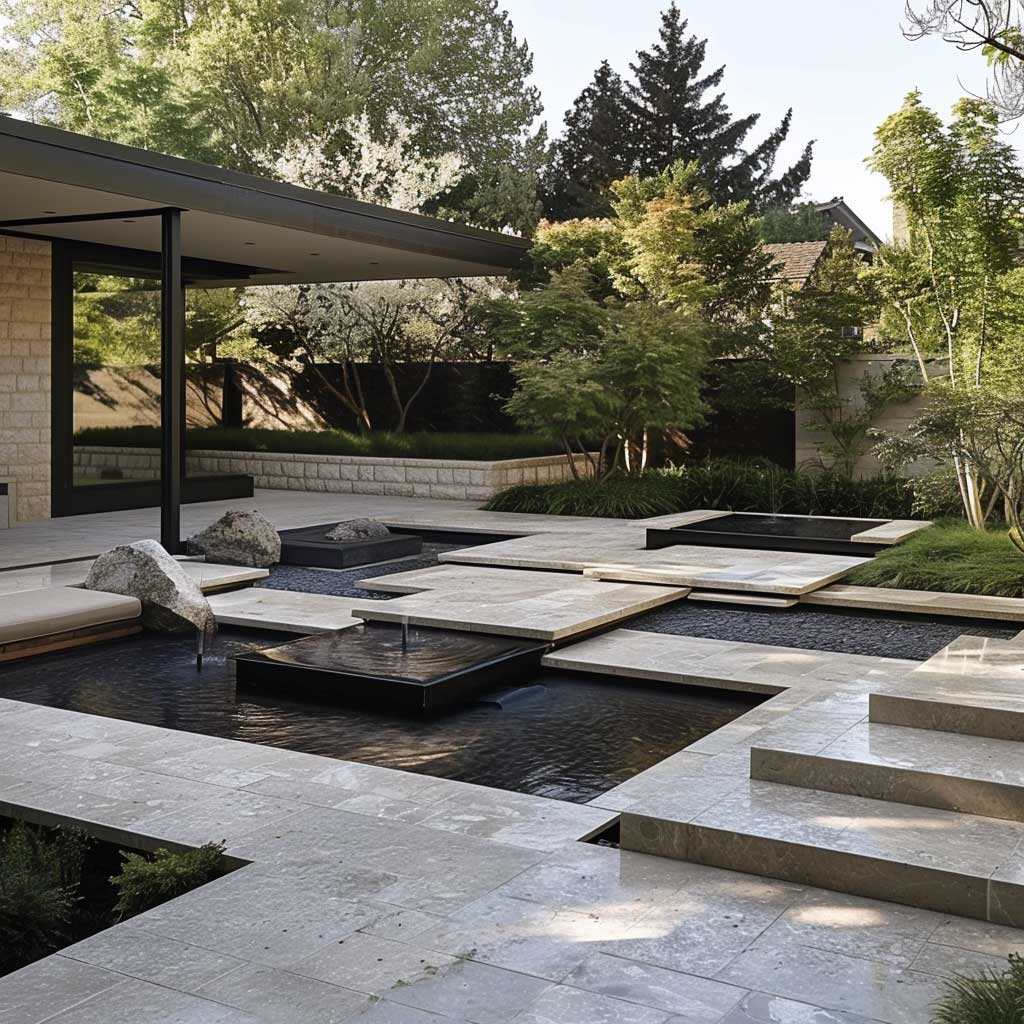

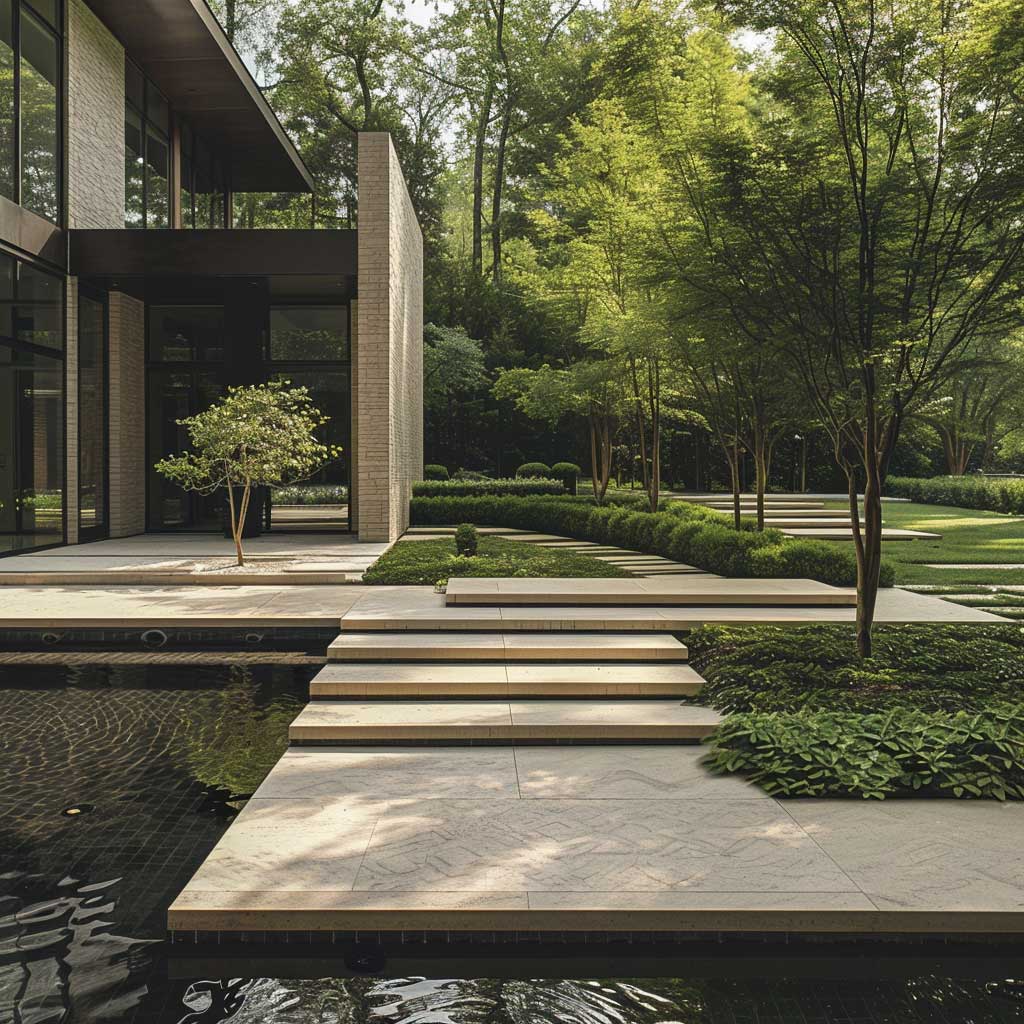

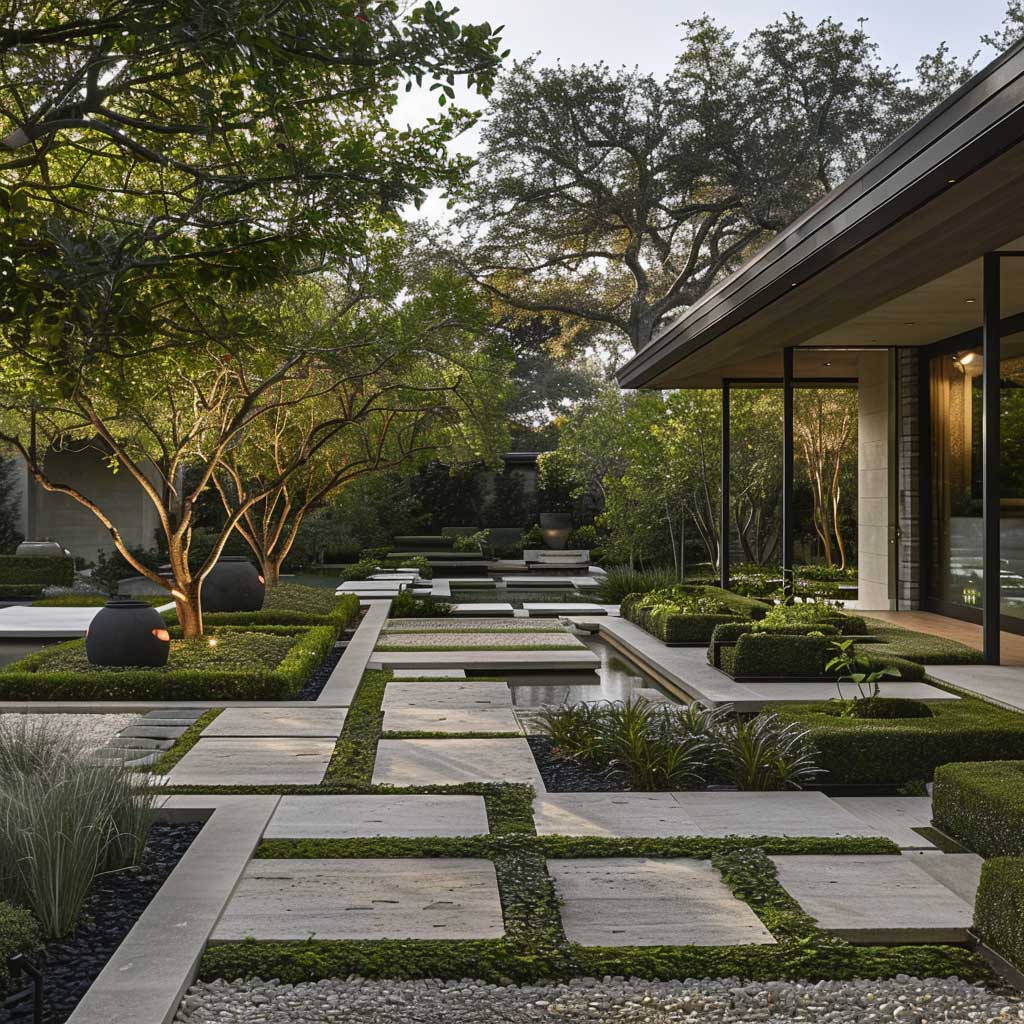



The essence of chic minimalism in landscape design lies in its clarity of purpose and its embrace of clean lines, restrained palette, and functional beauty. This approach to outdoor space is not merely about the absence of excess but is a deliberate choice to highlight the beauty of simplicity and structure. It is a reflection of modern living, where every element serves a purpose, and the overall aesthetic speaks to an understated elegance and a seamless connection between indoor and outdoor living.
In the heart of a minimalist landscape, hardscaping becomes the canvas upon which the garden is crafted. Materials such as polished concrete, sleek pavers, and architectural steel are often employed to create geometric pathways, patios, and borders. These elements define the space, creating a sense of order and coherence that is both visually striking and eminently practical. The use of a monochromatic color scheme or a limited palette enhances this effect, lending the garden a serene uniformity that is both calming and sophisticated.
Plant selection in a chic minimalist garden is intentional and restrained, focusing on species that offer architectural interest or a soothing green backdrop. Ornamental grasses, with their graceful form and movement, succulents, with their geometric shapes and drought resistance, and evergreen shrubs, with their year-round presence, are all staples of this design ethos. These plants are chosen not only for their aesthetic appeal but also for their ability to thrive with minimal care, reinforcing the low-maintenance aspect of the garden.
Furnishings and decor in a minimalist outdoor space echo the clean lines and high functionality of the landscape. Outdoor seating and dining areas are designed with sleek, contemporary furniture that complements the garden’s overall look while providing comfortable spaces for relaxation and entertainment. Lighting is carefully considered, with fixtures chosen to illuminate the garden subtly at night, enhancing its architectural features and extending its usability without disturbing its tranquil ambiance.
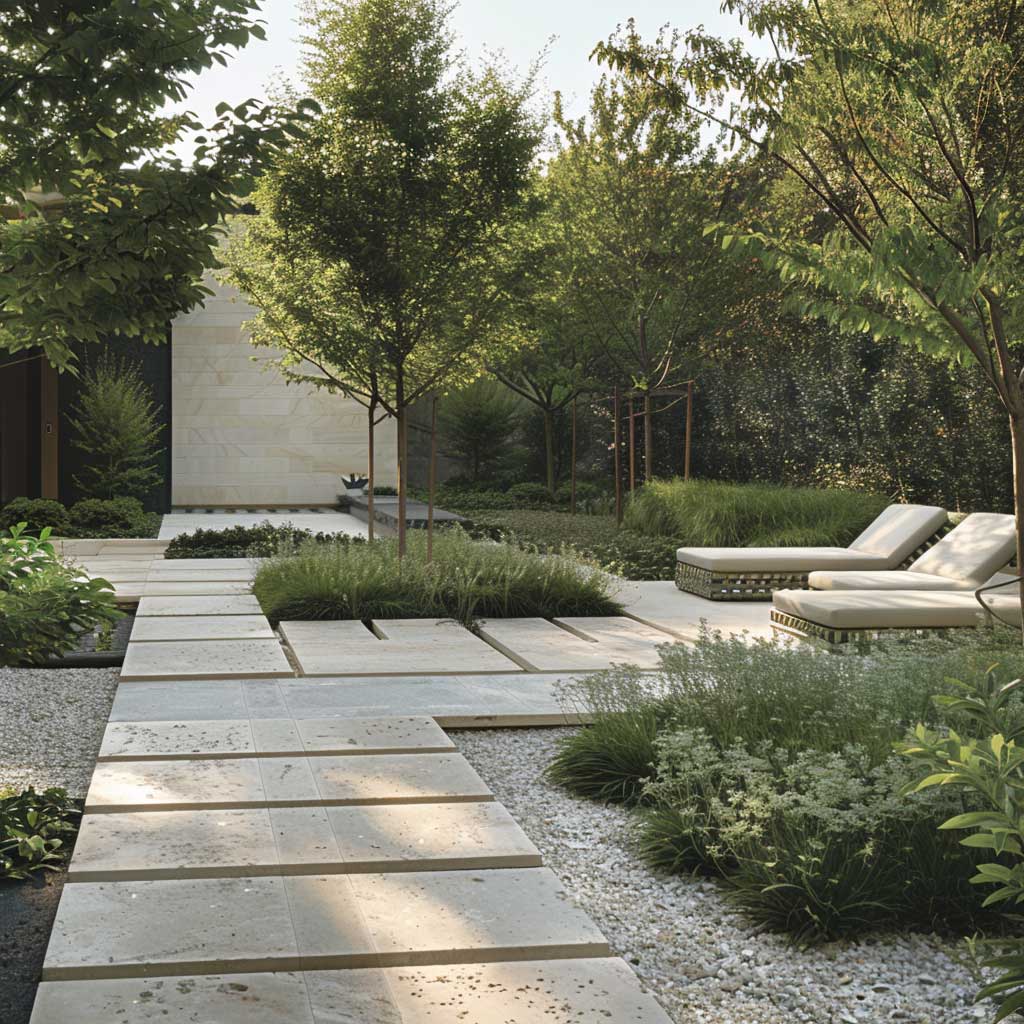

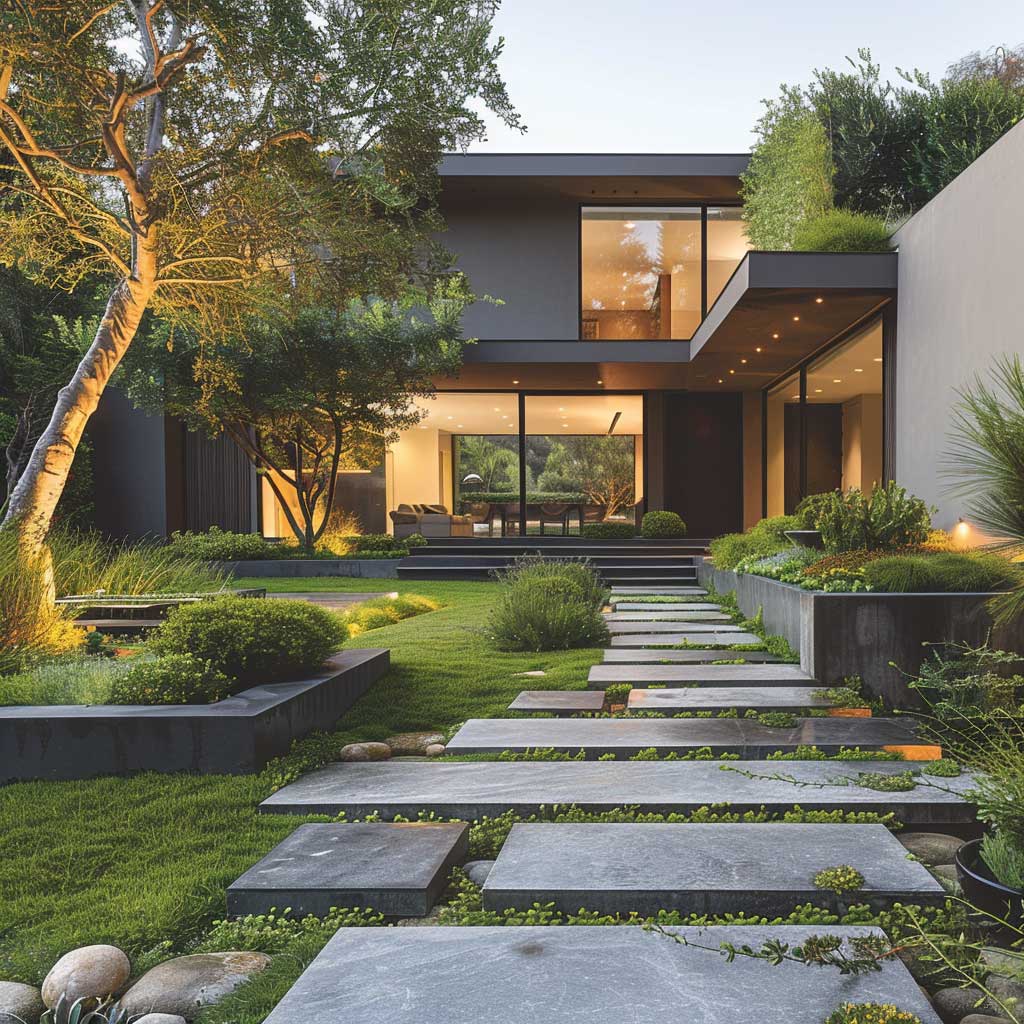





Water features in a minimalist garden are typically understated, integrated into the landscape in a way that feels organic yet refined. A simple, rectangular reflecting pool or a discreet wall-mounted fountain can add a dynamic element to the garden, providing a focal point that draws the eye without overwhelming the senses. The sound of water adds an additional layer of sensory pleasure to the garden, enhancing its peaceful atmosphere.
The principle of chic minimalism extends beyond the physical elements of the garden to the philosophy behind its design. It is about creating spaces that reflect the values of modern living—efficiency, sustainability, and beauty. By choosing durable, sustainable materials, focusing on native and low-water plants, and designing for ease of use and maintenance, the minimalist garden becomes a model of environmentally responsible landscaping that does not sacrifice style for substance.
In conclusion, chic minimalism in landscape design offers a blueprint for creating elegant outdoor spaces that are perfectly attuned to the rhythms of modern life. Through careful selection of plants and materials, thoughtful layout, and a focus on simplicity and functionality, homeowners can achieve a garden that is not only a pleasure to look at but a joy to live in. This approach to landscape design proves that minimalism, when executed with care and creativity, can lead to spaces that are rich in style and spirit, offering a serene and stylish retreat from the world.
The secrets to a low-maintenance garden lie in the embrace of simple landscape design. By focusing on the essentials and choosing materials and plants that require minimal care, it’s possible to create outdoor spaces that are both beautiful and easy to maintain. Whether your preference leans towards lush greenery, serene retreats, or chic minimalism, the key is to design with intention. This approach not only saves time and effort in garden upkeep but also establishes a more sustainable and environmentally friendly outdoor space. Through thoughtful planning and a focus on simplicity, your garden can become a source of joy rather than a chore, allowing you more time to relax and enjoy the beauty of your outdoor sanctuary.
